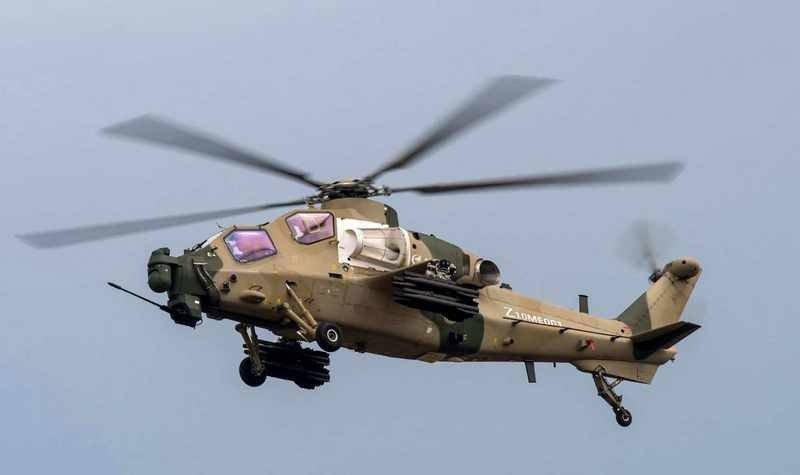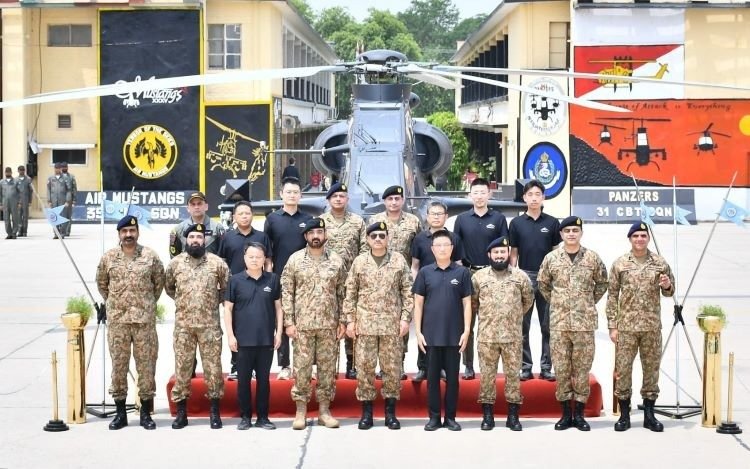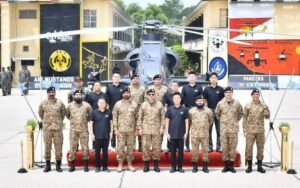Today the Pakistan Army proudly inducts Z 10ME attack helicopters into service, a defining moment for Pakistan Army Aviation. Chief of Army Staff Field Marshal Asim Munir led the ceremony at Multan Garrison and observed a live firepower exercise at the Muzaffargarh Field Firing Ranges, showcasing what’s next in battlefield readiness. The z 10me is an advanced attack helicopter platform designed for precision strike missions—day or night. Its all weather radar system supports targeting in rain fog or dust. The induction also marks a step toward civil military synergy, as Munir called for national trust to back modernization. Officials say this move reshapes strike capability in Pakistan. For more latest news checkout, Pakistan coverage.
Incident Overview
Pakistan Army Inducts Z 10ME Attack Helicopters Today launched a new era for Pakistan Army Aviation. Chief of Army Staff Field Marshal Asim Munir personally oversaw formal induction at Multan Garrison He praised coordination and readiness. He highlighted how the force transitions into modern attack power under direct oversight witnessing fighter pilots preparing for advanced missions.
Following the ceremony he visited the Muzaffargarh test area and assessed Muzaffargarh Field Firing Ranges performance. He praised crews and control staff for safe demonstration flights. The COAS was briefed on operational preparedness of the formation to assess long‑term strategy. Observers noted his approval marks a turning point in aerial readiness for Pakistan.
Capability Boost
The new helicopters represent an upgrade in combat readiness. The z 10me is purpose‑built for precision strike missions with night‑capable targeting modules. Engineers explained how its design overcomes dust and heat stress in combat zones. Pakistan now owns an aircraft capable of precise aerial attacks while maintaining air superiority in tough environments.
This platform is a modern attack helicopter platform built to NATO‑grade specs. It uses upgraded engines resistant to infrared tracking and anti‑aircraft missiles. With dual‑frequency radar and ECM, the system offers high survivability in contested airspace. Pakistan’s leaders see it as a force multiplier against both air and ground threats, finally moving beyond older vintage gunship limitations.
Firepower Demo
COAS observed a live firepower demonstration featuring smart rockets and guided missiles firing at static targets. These Z 10ME rotorcraft engaged simulated armoured threats in a coordinated strike script. The drill integrated real‑time sensor data passed to combined arms tactics cells. Drone teams relayed video feedback to command posts. Pakistan’s force command called the event a transparent showcase of strike generation under combat simulations. To get all the latest news, click here.
Officials added that live firepower demonstration by the Z 10ME helicopters was timed under desert heat to test engine cooling systems. Pilots executed fade‑away launches adjusted for wind drift. The display also showed how each unit communicates via encrypted radio links. Commanders now expect shorter response times and better accuracy than Cobra platforms previously allowed.
Strategic Message

The induction clearly signals Pakistan’s intent to reshape its strike posture. The Z 10ME acquisition marks progress beyond legacy fleets and shows readiness for asymmetric deterrence. Officials stressed it counters emerging aerial threats in modern combat. It also mitigates risks posed by surface‑to‑air munitions through a Manpad resistance upgrade integrated into avionics.
Field Marshal Munir linked the event with mission resilience requiring electronic warfare capability to survive future battlefields. He explained the fleet can jam enemy missiles and disrupt mechanised formations while guiding precision munitions. Army sources said this addition reshapes Pakistan’s operational calculus in the air domain.
Civil Military Synergy
The COAS held a closed‑door session with civilians and academics after the induction. He called for a civil military synergy model under which technological gains in platforms like Z 10ME will be supported by public trust. The message stressed combined defence progress with national cohesion.
Munir described the event as a showcase where Pakistan Army push modernisation and social unity. He urged the public to see defence tools not as isolationist but shared assets. The civil military synergy and whole of nation approach was declared central to preserving peace under rising regional tensions.
Tech Specs
The Z 10ME has a payload of 1.5 ton across four pylons. Its AESA radar tied to EO/IR pods delivers day and night targeting. Engineers praised the shielded all weather radar system with secure digital data links. Its glass cockpit integrates HOTAS controls and helmet‑mounted eyes. The system includes flare/chaff dispensers and ECM modules protecting against guided missile threats. These z 10me specs exceed previous plans and align Pakistan’s fleet with CAS doctrine. Explore top world stories and global updates, click here.
Broader Ties
This induction deepens ties between Pakistan and China aerospace sectors. The aircraft choice also aligns with CPEC strategy enabling future technology transfer. Planners noted increased synergy among drone units, artillery brigades and patrol helicopters. This aligns with Pakistan’s vision for integrated battlefield response across land, air and sea. Observers say the Z 10ME verdict answers critics of prior fleet limitations. Analysts also expect collaboration on simulators and avionics upgrades in years ahead.
Z 10ME Key Specifications
| Feature | Specification |
| Payload Capacity | Approx 1,500 kg over four external hardpoints |
| Armament Options | ATGMs, laser‐guided rockets, air‑to‑air missiles |
| Avionics / Cockpit | AESA radar, EO/IR targeting, HOTAS, glass displays |
| Defensive Suite | ECM, radar & laser warning sensors, flares/directors |
| Operational Role | Attack, close air support, counter‑obs and strike ops |
| Engine Upgrade | WZ‑9G turboshaft with intake filtration |
| Integration Features | Data‑linking with drones, tanks, ISR platforms |
Frequently Asked Questions (FAQs)
Does Pakistan have a Z-10 helicopter?
Yes, Pakistan has begun inducting Z‑10ME attack helicopters into Pakistan Army Aviation, with at least four confirmed deployed and more expected soon.
How many attack helicopters does Pakistan have?
Pakistan currently operates about 63 attack rotorcraft, combining roughly 55 AH‑1F Cobras, 4 Mi‑35s, and 4–8 newly inducted Z‑10ME units.
What is the nickname of the Z-10 helicopter?
The Chinese-made Z‑10 is nicknamed “Fierce Thunderbolt” in its domestic service, drawn from a character in the classic Water Margin saga.
What is the most powerful aircraft of Pakistan?
Pakistan’s most advanced fighter jet now is the JF‑17 Block III / J‑10CE, featuring AESA radar and advanced avionics—beating older Delta‑cockpit F‑16s.
How fast is the Z-10 helicopter?
The Z‑10 helicopter has a top speed of approximately 300 km/h (186 mph), according to its official performance data.








